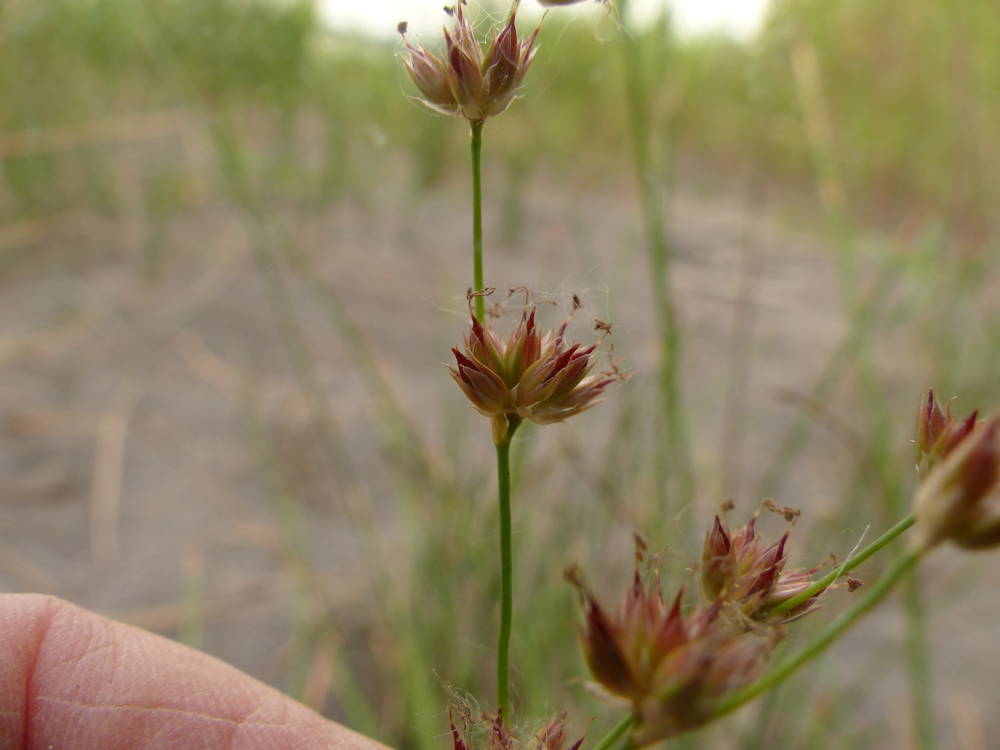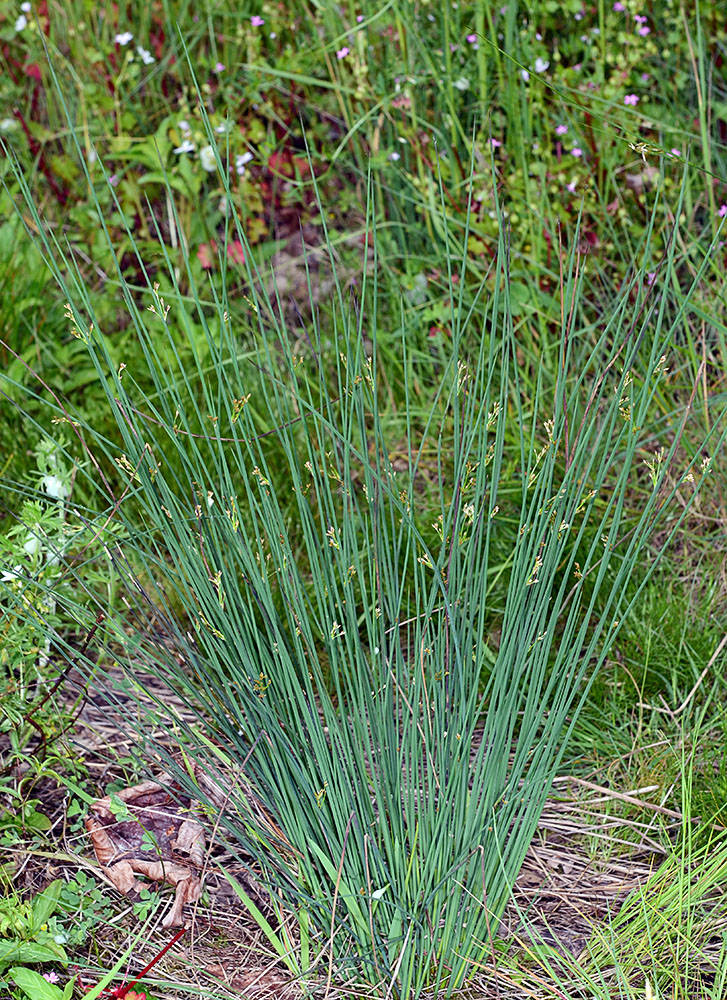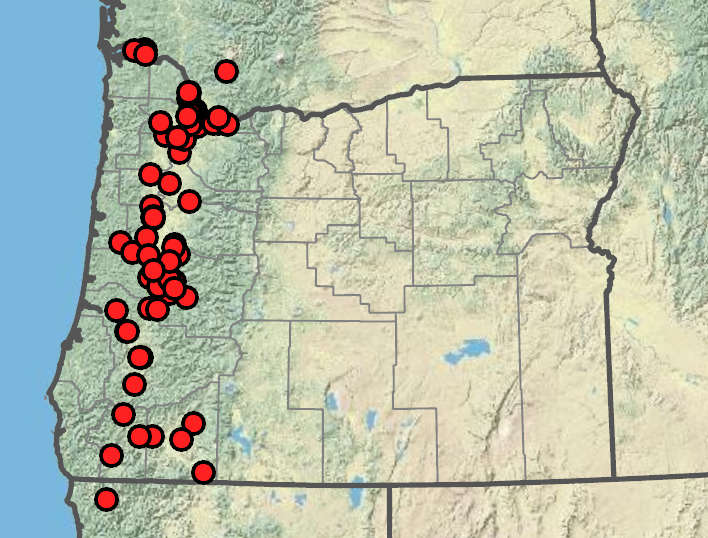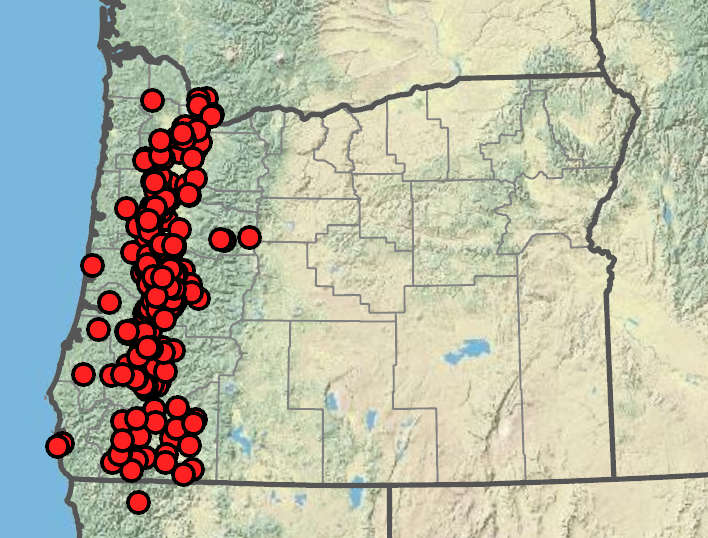Juncus oxymeris
Juncus patens
pointed rush
gray rush, spreading rush
flat; iris-like, blue-green, partially septate;
auricles absent.
without blades;
distal sheaths 4–10 cm, green to pale brown distally; dull or shiny; smooth;
apex symmetrical; thin, not winged.
10–70 clusters; clusters (2)3–7(11)-flowered.
a well-developed; loose cluster of 10–100+ flowers;
branches usually visible;
inflorescence bracts not swollen.
tepals 6, green to pale brown, usually red-tipped;
stamens 6;
filaments 0.5–0.8 mm;
anthers 0.7–1.6 mm;
styles 0.4–1 mm.
tepals 6, green to pale brown;
tips acute;
stamens 6;
filaments 0.5–1 mm;
anthers 0.4–0.65 mm;
styles 0.1 mm.
longer than the tepals, brown to dark red, usually gradually tapered to long acuminate tip, 1-chambered.
subglobose, 2–2.7 mm, pale brown;
apex rounded or subacute;
styles deciduous or inconspicuous; capsule shorter than the tepals, 1-chambered.
0.4–0.5 × 0.2–0.25 mm, apiculate, reticulate.
0.4–0.5 × 0.2–0.3 mm, apiculate.
Juncus oxymeris
Juncus patens
Shores, swales, marshes, wet meadows, fresh water intertidal. 0–700m. Casc, CR, Sisk, WV. CA, WA; north to British Columbia. Native.
Shores, floodplains, wet prairies, wet forest, swales, marshes, ditches. 0–1000 m. Casc, CR, Sisk, WV. CA, WA; south to Mexico. Native.
The blue-green stems separate J. patens from all other cespitose species in Group 2, except the rare exotic J. inflexus, which has a chambered pith and dark tepals. However, the Australian introduction J. usitatus L.A.S. Johnson has become an invasive pest in northern California, where it has been mistakenly used in native plant restoration work and landscaping because it closely resembles J. patens. They are separable by the blunt not acute petals of J. usitatus, its three stamens per flower, and its tepals much shorter than the capsules. Juncus patens has six stamens per flower, and its tepals are longer than the capsules.
Peter Zika
Peter Zika
- Local floras:
BC,
CA,
OR,
WA
- Local Web sites:
CalFlora,
CalPhotos,
Flora NW,
PNW Herbaria
WildflowerSearch
iNaturalist (observations)
USDA Plants Database
- LBJ Wildflower Center
- SEINet
- Plants of the World Online
- Encyclopedia of Life
- Wikipedia
- Google Image Search
- Local floras:
CA,
OR,
WA
- Local Web sites:
CalFlora,
CalPhotos,
Flora NW,
PNW Herbaria
WildflowerSearch
iNaturalist (observations)
USDA Plants Database
- LBJ Wildflower Center
- SEINet
- Plants of the World Online
- Encyclopedia of Life
- Wikipedia
- Google Image Search



